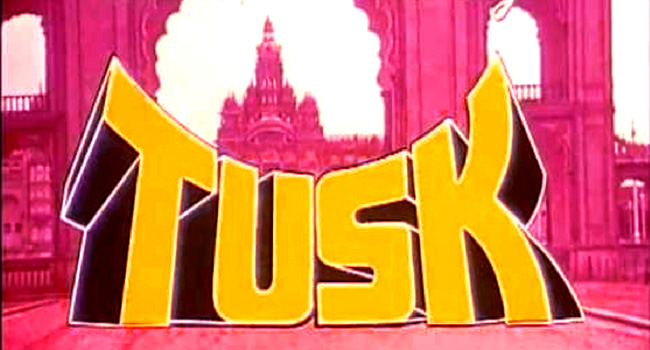1980 wasn’t a great year for Alejandro Jodorowsky. Having just barely survived the end of the 1970′s when the film that was to be his magnum opus — an adaptation of Frank Herbert’s classic Dune — fell apart for the final time, Jodo was anxious to get back to work. He agreed to make a children’s film.
At first, the idea of the anarchist auteur making a movie for kids might sound odd, but Tusk (Poo Lorn L’Elephant) told a tale about the shared fate of an English girl and an Indian elephant. The story had the kind of spiritual overtones that Jodo had marshaled so furiously in The Holy Mountain and the coming of age tale shared some similarities with El Topo — even the Indian locations promised exotic settings that surely inspired the director.
Alas, a classic it was not meant to be. Tusk is roundly criticized by those who’ve been able to see it — the only home release is an un-subtitled French language version on VHS. Even Jodo has disowned the movie.
But is it really that bad? Isn’t the parallel birth scene at the beginning of the film remarkable? Doesn’t the fact that you can follow the film without knowing French say something about the master’s mastery of visual storytelling? Don’t you want to run out and find this prog/raga soundtrack on vinyl?
Here’s what the Cue Dot Confessions blog has to say:
If Jodorowsky’s mark is seen anywhere it is in the strong anti-colonial sentiment that runs through the film and in the scattered inconsistency of the message. Tusk is a film for children and viewed side by side with other slapstick-centric “ethnographic” films of that period (The Gods Must Be Crazy springs to mind), it could possibly be viewed as quite unremarkable, and yet the way that Jodorowsky handles the Indian landscape and its people still seems fresh and surprisingly natural. There are sweeping, long take crane shots that literally drink up all the vibrancy of country. The Indian extras act quite unselfconciously in the face of the stiff “acting” of the English and the bald, over-drawn comedy of the film’s villains.
Jodorowsky has an obvious affinity with India and an affection for the people and the animals. The elephant scenes, and there are many, are impressive in their National Geographic-ness even if they add little to the momentum of the film. These scenes make Tusk’s first half a joy to watch. Unfortunately, all of this freshness is squandered as the on again, off again romance, machinations, and motivations of the cast twist, overlap, lie dormant and then snap to life. By the time everything has fallen into a jumbled heap…
Regardless of its ultimate value in Jodorowsky’s oeuvre, Tusk is required viewing for any completist. Here is the film in its entirety:
Stay Awake!
Please subscribe to my YouTube channel where I archive all of the videos I curate at Insomnia. Click here to check out more Cinema posts.








